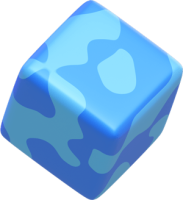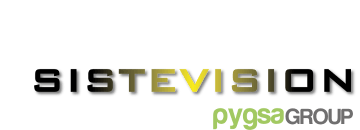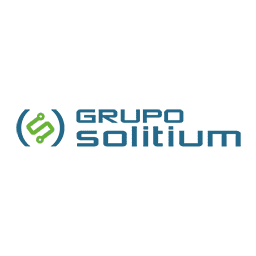Additium 3D CNC Machining Service
- 2D milling
- Plastic, wood, cork, foam and more
- Dimensional and detail accuracy
From prototypes to scale productions
Order your parts for prototypes or small series online, with a tailor-made quotation.
Request a quote


Testimonials
What do they say about us?
What is CNC Milling or CNC Machining?

Request your cutting and engraving quote online now!
Upload your CAD file
Upload your 3D design. If you don't have it, don't worry. At Additium3D, we will be happy to work with you to create the necessary file.
Get a quote with DFM
Within hours, you will receive a detailed design analysis and quotation with recommendations and pricing.
Manufacturing begins
Once you have reviewed and accepted the quote, we will start 3D printing your project.
You receive your order
The parts reach you in record time. And don't worry about delivery, we take care of that too, so that your parts are in your hands in just a few hours.
Why choose Additium3D for CNC machining?
Unparalleled precision in every part
We serve all across Europe. And yes — you can visit us in Valencia, Spain.
Speed and efficiency
Cost reduction without compromising quality
What materials are used for Additium 3D Machining?
Including ABS, PVC, polyethylene, polypropylene, among others. These plastics are used in a variety of applications requiring lightness, strength and ease of moulding, such as in the automotive, electronics and consumer goods industries.
Ideal for projects where a natural and warm look is desired. Wood is used in CNC machining for the creation of furniture, decorative items, architectural models and artistic elements.
A lightweight, elastic material used for the manufacture of insulation products, plugs and decorative items.
Such as expanded polystyrene (EPS) and polyurethane (PU), they are used for the manufacture of packaging, insulation, models and specific product components.
Composed by combining different materials such as carbon fibre or glass fibre with epoxy resin, they are used in applications requiring high strength and lightness, such as in the aerospace and automotive industry.
Although fragile, CNC machining is used to cut and shape tempered or laminated glass for applications in furniture, decoration, or architectural components.
These materials provide a wide range of options for various applications in CNC machining, offering solutions tailored to specific design and production needs. Is there a particular material you would like to know more about or specific applications in CNC machining? Find out more!
Finishing options for CNC Machining
- Polished: It consists of smoothing the surface of the piece to give it a shiny and smooth finish. It is used to improve the aesthetics and appearance of the pieces.
- Anodised: This process increases the corrosion and wear resistance of aluminium parts by creating a protective oxide layer. It also offers colouring options to customise parts.
- Painting: It is applied to enhance the aesthetic appearance of parts. It provides a wide range of colours and finishes, including matt, gloss or textured.
- Powder coating: Similar to paint, but applied as a powder that melts and adheres to the surface, creating a tough, uniform protective coating.
- Sandblasting: Used to give surfaces a matt, uniform appearance and to remove burrs and machining marks.
- Textured: Customised patterns or textures can be applied to the surfaces of the parts, adding a distinctive look and functionality.
- Hard anodised: This anodising process produces a stronger and more durable coating on metals such as aluminium, improving wear and corrosion resistance.
- Varnished: A transparent protective coating is applied to the surface of the part to improve its durability and resistance to external elements.
How much does it cost to manufacture CNC machined parts?
The cost of CNC milling depends on factors such as materials, design and machine. Request your online quotation now and receive a detailed and personalised cost estimate within hours - we will analyse your case without obligation!
CNC Machining applications in various industries
Automotive
To create precise and functional parts, from engine components to body elements. Precision and consistency are vital to vehicle safety and performance.
Doctor
Precision is essential in the manufacture of medical and prosthetic devices. It is used for accurate and customised parts, such as implants, surgical instruments and medical equipment components.
Aerospace
CNC Machining plays a crucial role in the aerospace industry by manufacturing precise and lightweight components for aircraft, rockets and satellites.
Electronics
It is used for precision components for electronic devices, such as housings, connectors and other items requiring tight tolerances.
Energy Industry
It is used to manufacture critical components for power generation, distribution and storage, such as turbines, solar panel components and renewable energy systems.
Construction Industry
In construction, CNC machining is used to manufacture detailed architectural elements such as ornaments, pillars and other structural components.
What are the advantages of CNC Machining?
At Additium 3D we want to help you make informed decisions.
- Accuracy: CNC machining offers exceptional levels of precision in the production of parts, with tight tolerances ensuring accuracy in every component manufactured.
- Repeatability: It enables consistent reproduction of identical parts without variation in quality, regardless of production volume.
- Efficiency: Process automation reduces manufacturing times and minimises errors, which increases overall production efficiency.
- Flexibility in design: It allows the creation of complex shapes and designs that would be difficult or impossible to achieve with conventional manufacturing methods.
- Waste reduction: As a precise cutting process, it minimises material waste, leading to more sustainable production.
- Wide range of materials: It can work with a wide variety of materials, including plastics, wood, foams, composites and more, adapting to diverse manufacturing needs.
- Automation and programming: Computer programming enables automated production, resulting in a significant reduction of human intervention in the process.
- Quality improvement: The accuracy and consistency of CNC machining improves the quality of manufactured parts, reducing the need for rework.
- Faster production time: CNC machining is often faster than conventional manufacturing methods, which speeds up delivery time.
- Customisation and rapid prototyping: It enables the rapid manufacture of custom parts and prototypes, resulting in flexibility and adaptability to specific design needs.
3D Machining work carried out by Additium 3D
Replica Microscope for the production company La Factoría de los Sueños
At Additium3D, we don't just offer 3D printing, we offer complete additive manufacturing solutions. Our experience ranges from the...
Orthopaedics in 3D - We adapt a customised support for a mechanised chair.
At Additium3D, we are committed to the wellbeing of people, and one of the areas where our technology has an important role to play is in the...
Powering Innovation in Energy Storage: Power Electronics 3D mock-up for trade shows
Power Electronics, the world's leading manufacturer of solar inverters and energy storage, participated in Solar & Storage Live London,...
3D Printing in Healthcare: Design and manufacture of elastic and adaptable support for catheters
There are numerous uses for 3D printing technology in everyday life, but one of the ones that fills us with...
Customers who already trust us

















FAQS CNC Milling
CNC milling is a machining method that uses rotating tools to shape materials. It is controlled by a computer system (CNC) that allows for greater precision in cutting and part production.
A CNC milling machine is a computer-controlled machine tool that cuts materials with rotating tools. It is used to create parts with precise and complex shapes in a wide range of materials.
With a CNC milling machine, parts can be manufactured for a variety of industries, including components for aerospace, automotive, medical and more. From prototypes to large-scale production, CNC milling offers versatility.
The CNC milling machine cuts, drills and shapes materials to design specifications. It uses rotary tooling and a computer control to produce high-precision parts.
The CNC milling process begins with programming the machine with the coordinates and cutting path. The machine then removes material from the workpiece following these instructions to create the desired shape.
In the lathe process, the tool rotates and the workpiece is held stationary, usually to produce cylindrical shapes. In milling, the tool rotates and cuts the workpiece which moves in multiple directions, allowing for a greater variety of shapes.





